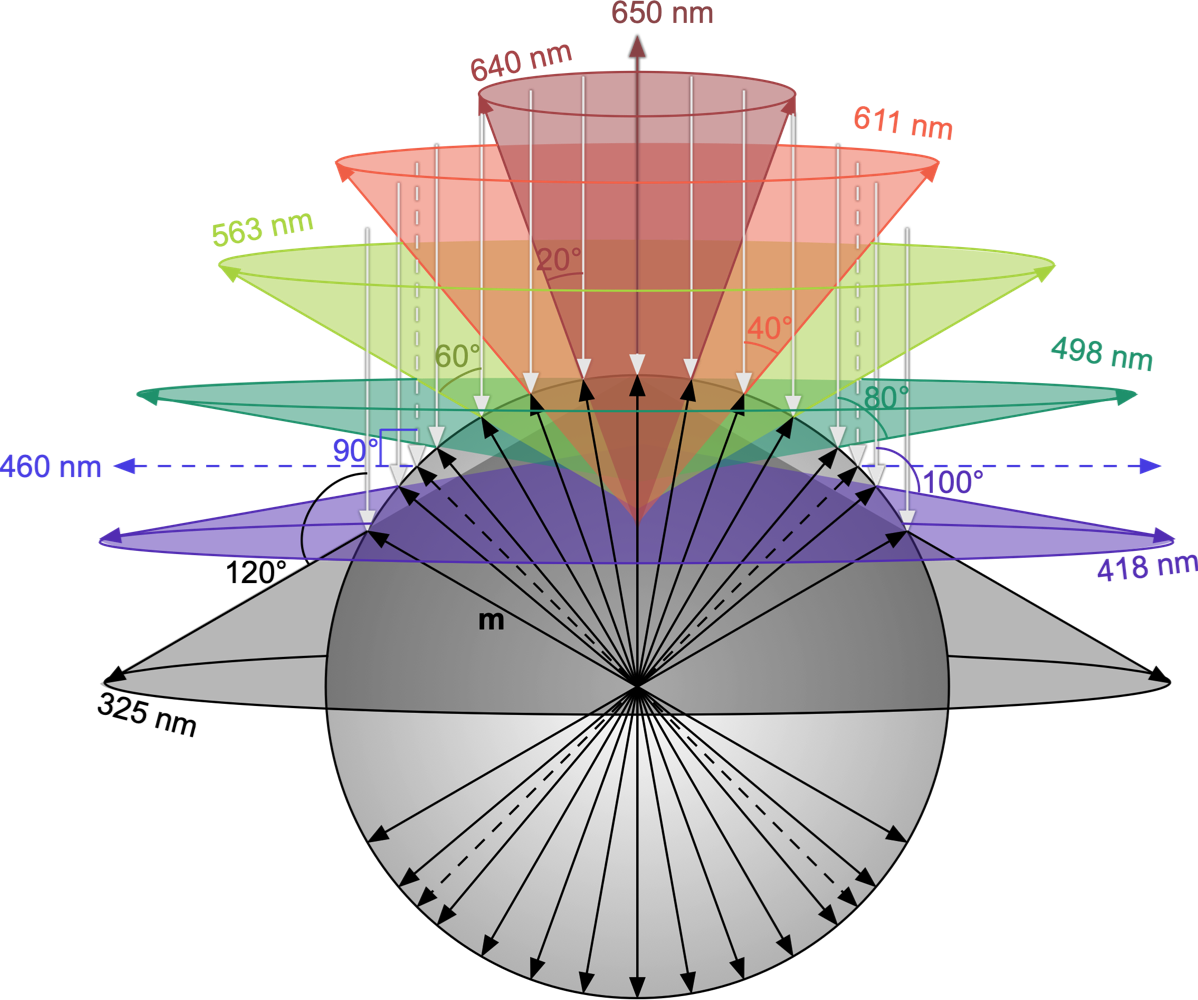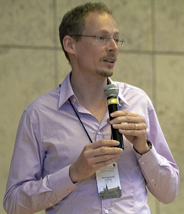The things that are least important for our survival are the very things that make us human.
Savas Dimopoulos
Liquid crystals stand between the isotropic liquid phase and the strongly organized solid state. Life stands between complete disorder, which is death and complete rigidity, which is death again.
Dikran G. Dervichian, 1977
Toll dieses Leben, es ist aufregend, anstrengend, lustig, traurig - und es endet tödlich!!
Bei manchen anderen ist es doch richtig langweilig - viel zu geordnet - aber sterben tun sie trotzdem.
Daniel Krüerke
Coming together is a beginning; keeping together is progress; working together is success.
Henry Ford
Goals are deceptive—the unaimed arrow never misses.
Kimo
The best things in life aren't things.
Kimo
Religion is a culture of faith. Science is a culture of doubt.
Richard Feynman
We are trying to prove ourselves wrong as quickly as possible, because only in that way can we find progress.
Richard Feynman
“It's of no use whatsoever [...] this is just an experiment that proves Maestro Maxwell was right –– we just have these mysterious electromagnetic waves that we cannot see with the naked eye. But they are there.”
Heinrich Hertz on the possible application of radio waves.
Man hat mir wohl die Frage gestellt, ob sich kristallin-flüssige Substanzen technisch verwenden lassen?
Ich sehe keine Möglichkeit dazu.
Daniel Vorländer on the possible application of liquid crystals, as seen in 1924.
It doesn’t make sense to hire smart people and tell them what to do.
We hire smart people so they can tell us what to do.
Steve Jobs
What did those companies [that did not succeed over time] fundamentally do wrong? It's usually that they just missed the future.
Larry Page
You can tell whether a man is clever by his answers. You can tell whether a man is wise by his questions.
Naguib Mahfouz
It is better to ask some of the questions than to know all the answers.
James Thurber
To be without some of the things you want is an indispensable part of happiness.
Bertrand Russell
An expert is a man who has made all the mistakes which can be made, in a narrow field.
Niels Bohr
In science one tries to tell people, in such a way as to be understood by everyone, something that no one ever knew before. In poetry, it's the exact opposite.
Paul Dirac
There's no group of people that are more in love with what they study than the people who are doing liquid crystals.
Noel Clark
The best route to avoid being replaced by a synthesis machine is to be the best at using one.
Neil Withers, Chemistry World 2016, feature issue on the future of chemistry.
It is better to be interestingly wrong than boringly right.
Richard L. Jones, on the learning benefit of getting things wrong in a way that makes you think.
To change your mind is the best way to show that you still have one.
Taylor Mali
The scientist does not study nature because it is useful; he studies it because he delights in it, and he delights in it because it is beautiful. If nature were not beautiful, it would not be worth knowing, and if nature were not worth knowing, life would not be worth living.
Henri Poincaré
Don't ever grow up. It's boring.
J. Roy Sambles FRS, professor in physics at University of Exter
More than anything else it's because of the work of other people that I've been able to do the little that I've done.
Chet Pipkin, founder of Belkin
Human beings are works in progress who mistakenly think they’re finished. ... The one constant in our lives is change.
Dan Gilbert
We just published a beautiful work with my PhD student Xu Ma as first author that describes the production and analysis of cholesteric spherical reflectors (CSRs) with focal conic director field configuration. It is a collaboration with the applied mathematics group of Prof. Apala Majumdar, who simulated the structures that Xu produced. Beyond the practical result of the new and improved CSRs, the study gave us a completely new perspective on how polymeric stabilizers behave at an interface between a liquid crystal and an isotropic liquid. There is an intricate dialog between the liquid crystal and the polymer, where the polymer influences the alignment of the liquid crystal, but the long-range orientational order of the liquid crystal also has an entropic impact on the polymer, which then determines the interaction between the two. Read about it in Nature Communications.
_
Our work on Cholesteric Spherical Reflectors, or CSRs, is soon celebrating its 10th anniversary, as our first paper on the topic was published on 7th of February 2014. In the decade that passed, we have been working with many collaborators bringing very different types of expertise, allowing us to move from the curiosity-driven physics research that allowed us to elucidate the peculiar optics of CSRs to proposing solutions to pressing societal and industrial problems using polymerized CSRs, and now we are in the process of founding a company that tries to bring the first of these solutions to the market. To celebrate the anniversary, here is a drawing that illustrates the cones of selective reflection that arise from CSRs, mentioned in text in our first paper but not drawn at that time.

The journal Liquid Crystals is publishing a special issue to celebrate the 50th anniversary of cyanobiphenyls. My contribution to this issue is now on-line. It is a slightly unusual article, presenting some perspectives on nCBs often being the obvious choice to use as archetypal liquid crystal materials, although they exhibit a behavior that is quite different from most other liquid crystal materials. In the context of telling this story, the article also gives some of the history for several of the research activities that have been prominent in my group.
_
Please check out my review of liquid crystal elastomers (LCEs) in the new journal Programmable Materials (open access), which takes a historical perspective throughout the 50 years since this class of materials was first considered, but also introduces some new ideas, for instance emphasizing the importance of operating temperature versus clearing temperature of the LCE and how this can have great impact on the performance of photoactuated LCEs. I learnt a lot while doing the research for this review and I hope it can be a valuable resource for the community.
_
If you are struggling with how to get documents to look good, and never were taught anything about layout, you may find my scientific writing document layout guide helpful.
_
Professor Jan Lagerwall

The same year he went to the United States and The University of Colorado at Boulder, where he had a short post-doctoral stay in the Liquid Crystal Physics group of Prof. Noel Clark. In 2003 he moved to Germany, first to Berlin for a post-doc in the group of Prof. Gerd Heppke, physical chemistry, Technische Universität Berlin, then to Stuttgart for what came to be his longest post-doc stay, in the Liquid Crystal Physical Chemistry group of Prof. Frank Gießelmann, University of Stuttgart. During his post-doc years he initially pursued the work on chiral smectic liquid crystals that he had started during his doctoral studies, but soon he broadened his research scope to encompass also lyotropic liquid crystals. Together with Giusy Scalia he also studied the combination of liquid crystals and nanoparticles, foremost carbon nanotubes, where his main contribution was the introduction of lyotropic hosts.
In 2007 he moved to Halle, Germany, where he took on a position as Junior Research Group Leader (Nachwuchsgruppenleiter) at the Martin-Luther-Universität Halle-Wittenberg, Institute of Chemistry - Physical Chemistry. He now developed a research field that he had just initiated at the end of his post-doc time, in collaboration with the group of Prof. Younan Xia (at the time at the University of Washington, Seattle), namely electrospinning of polymer fibers with liquid crystal cores. He also started working with liquid crystal microfluidics, setting up a lab for producing and studying liquid crystalline shells produced via capillary microfluidics. The two latter topics are currently two of his four main research foci, the microfluidics research divided into one track focusing on curved liquid crystal elastomer actuators and another on cholesteric shells and droplets. Additionally, his group works also with colloidal liquid crystals, the main system of study being cellulose nanocrystals (CNC). The focus on CNC arose as a result of a collaboration with the group of Prof. Lennart Bergström at Stockholm University, Stockholm, Sweden.
His recognition as an independent researcher, advisor and lecturer was confirmed when he in 2007 obtained his Docent title in physics at Chalmers University of Technology (Docent lecture title: Liquid crystals in modern soft matter physics research). The Swedish qualification as Docent recognizes "documented independent ability to lead in formulating and solving scientific research problems, as well as pedagogical competence at the advanced graduate study level". It is generally regarded as a certificate of the skills and experience expected by a professor and independent group leader and is thus in this sense largely the Swedish equivalent of the German Habilitation. Jan successfully defended his application for this title in November 2010 at the Martin-Luther-Universität Halle-Wittenberg (field: physical chemistry; thesis title: Three facets of modern liquid crystal science).
From September 2010 to February 2014 he was at the Graduate School of Convergence Science and Technology of Seoul National University, Suwon, South Korea. As assistant and, from March 2013, associate professor at this recently established and rapidly developing graduate school he built up a new research group devoted to the study of nano- and microscale ordered soft matter, with liquid crystals playing a key role. This was a period largely devoted to establishing truly transdisciplinary research activities and collaborations with researchers with very different backgrounds, for instance on wearable technology, soft robotics and sustainably produced bio-derived nanoparticles.
Since March 2014 he is full professor in physics at the Physics & Materials Science Research Unit of the University of Luxembourg. While the intention is to continue research activities that cross boundaries and excite people with varying backgrounds, there is room also for more fundamental physics (and physical chemistry) research, dealing, for instance, with topological defects and their configurations on liquid crystal shells. This research is carried out in parallel with more applied projects.
Jan has been member of the International Liquid Crystal Society ILCS since he started working seriously with liquid crystals in 1998, and he has engaged actively in the society's activities. Between 2008 and 2015 he relaunched and managed the ILCS web site and he is still board member of the ILCS, currently as the BeNeLux regional representative.
Outside his work as a scientist, he very much enjoys music, movies and art. During his high school years he played in a pop band and during his time as an undergraduate student he was working as a DJ for four years in the Chalmers student union DJ organization Svea Skivgarde. He very much enjoys listening to good music and dancing, and if he finds the time he also likes to make music of his own, although today his spare time rarely allows this. To relax and refresh the mind he also enjoys nature, on the bike or on foot, towards the evening preferably followed by a good meal (for instance from the Italian cuisine) with a good wine.
You can download a two-page resumé for Jan Lagerwall here.
If you want to send Jan an e-mail, you can fill out an e-mail form here.

